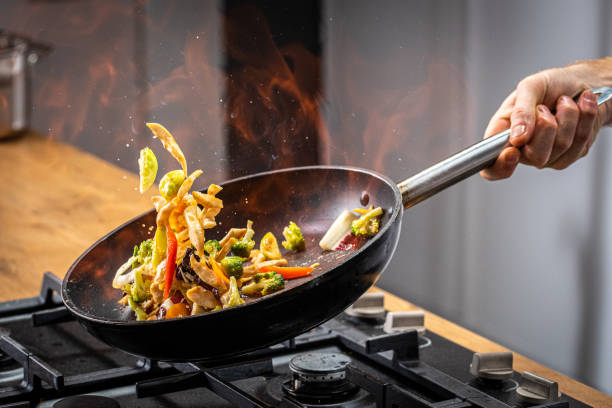One thing we’ve learnt over the years is that if you’re looking for great food, the locals know best. We’ve found some of the tastiest Thai street food on a tour with a Bangkok resident and a particularly fragrant tagine when invited into a family h
By South Africa specialist Sophie
Once ruled by both Dutch and British colonists, Cape Town has a rich food culture that marries the city’s European influences with its African roots. During the colonial era, slaves were brought over from Indonesia, India, Malaysia and Sri Lanka. Over the centuries, their culinary influences have been passed down through generations of the Cape Malay community.
On this five-and-a-half-hour tour, I sampled dishes that have been prepared and eaten by locals of different ethnicities for centuries. With my private guide, I visited family-run eateries, sizzling street stalls and artisan coffee roasters, while learning about the history and culture of each area and getting to know the people who cook this food every day.
Exploring the city’s African food traditions, I tried a portion of pap — a plain, very thick, porridge-like dish made from maize that’s a staple across Southern Africa. My guide explained that the thickness is so that it can be eaten by hand.
In the vividly painted Bo-Kaap district, you can sample Cape Malay specialties such as samosas freshly prepared that morning, babotie (spiced mince baked with a golden egg-based topping), and koesisters (spiced doughnuts).
Visiting an Indian eatery, I ate my first bunny chow (a rich curry served in a hollowed out loaf of bread). We then compared this to the Afrikaans-influenced vetkoek (fried dough bread filled with well-seasoned ground beef).
Finally, we called into an independent micro coffee roaster. The owner talked us through the coffee-making process, before I sat down for a mug of some of the best coffee I’ve ever had.
Consider including this in a self-drive trip from Cape Town through the Winelands
By Mauritius specialist Kate
Many Mauritian hotels offer Creole-style dishes— but there’s nothing quite like genuine home cooking. As part of a guided tour of the island, I joined Marie and her family in her traditional Creole home for lunch.
To get there, I drove through central Mauritius, passing through the town of Curepipe. Marie lives in the middle of a small row of houses that back onto tall sugarcane fields. On arrival, she greeted me with a freshly-squeezed glass of pineapple juice and a massive grin. Only reaching my elbow, she’s a tiny character with a bubbly enthusiasm for cooking that shone through, despite us not sharing a language (my guide joined us to translate).
While there’s a kitchen inside, the majority of the cooking takes place outside under a corrugated iron roof. The traditional cooking technique Marie showed me, feu du bois, uses a wood-fired oven, stoked by blowing into a metal straw. You can see how curry paste is made by grinding spices, garlic and ginger between two stones. Most of the ingredients come from the garden, and a neighbour caught the tilapia fish in a nearby stream.
After the food is prepared, you’ll sit at a heavily-laden table. Marie’s sister, sister-in-law and young granddaughter, Eva, had been pitching in with the cooking, and sat down to join us. This is an opportunity to dip into a variety of dishes, from pumpkin puree and red lentil soup to deer or goat curry. Indian-inspired curries are popular on Mauritius, but Marie’s recipes hark back to African roots, resulting in a more fragrant, sweeter dish.
After a leisurely meal, the women were keen to show me some sega, a dance which originates from mainland Africa — tiny Eva was particularly enthusiastic with her moves. As I departed, they proffered their range of homemade flavoured rum.
As part of the day’s tour you can also visit a French-colonial mansion for a spot of tea tasting. Afterwards, take a walking tour of the capital, Port Louis, for a well-rounded cultural experience.



Test
17 Aug 2023Lorem Ipsum Is Simply Dummy Text Of The Printing And Typesetting Industry. Lorem Ipsum Has Been
dev
17 Aug 2023This is new test entry21233
sandhya
17 Aug 2023Lorem Ipsum test
Monu
17 Aug 2023fgdgfd
Monu
17 Aug 2023jhtr grdhgtfh ghrdghr
Test
17 Aug 2023This is test comment…
Rajesh Kumar
14 Aug 2023j
Subham
13 Aug 2023hfghg
zip
13 Aug 2023htsdhd